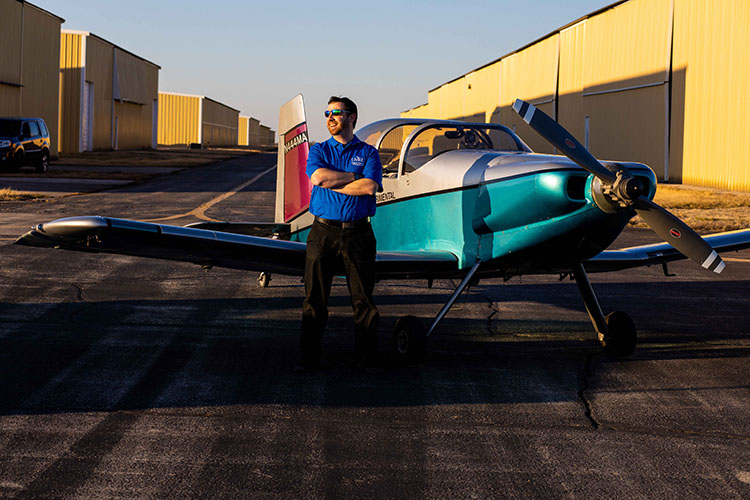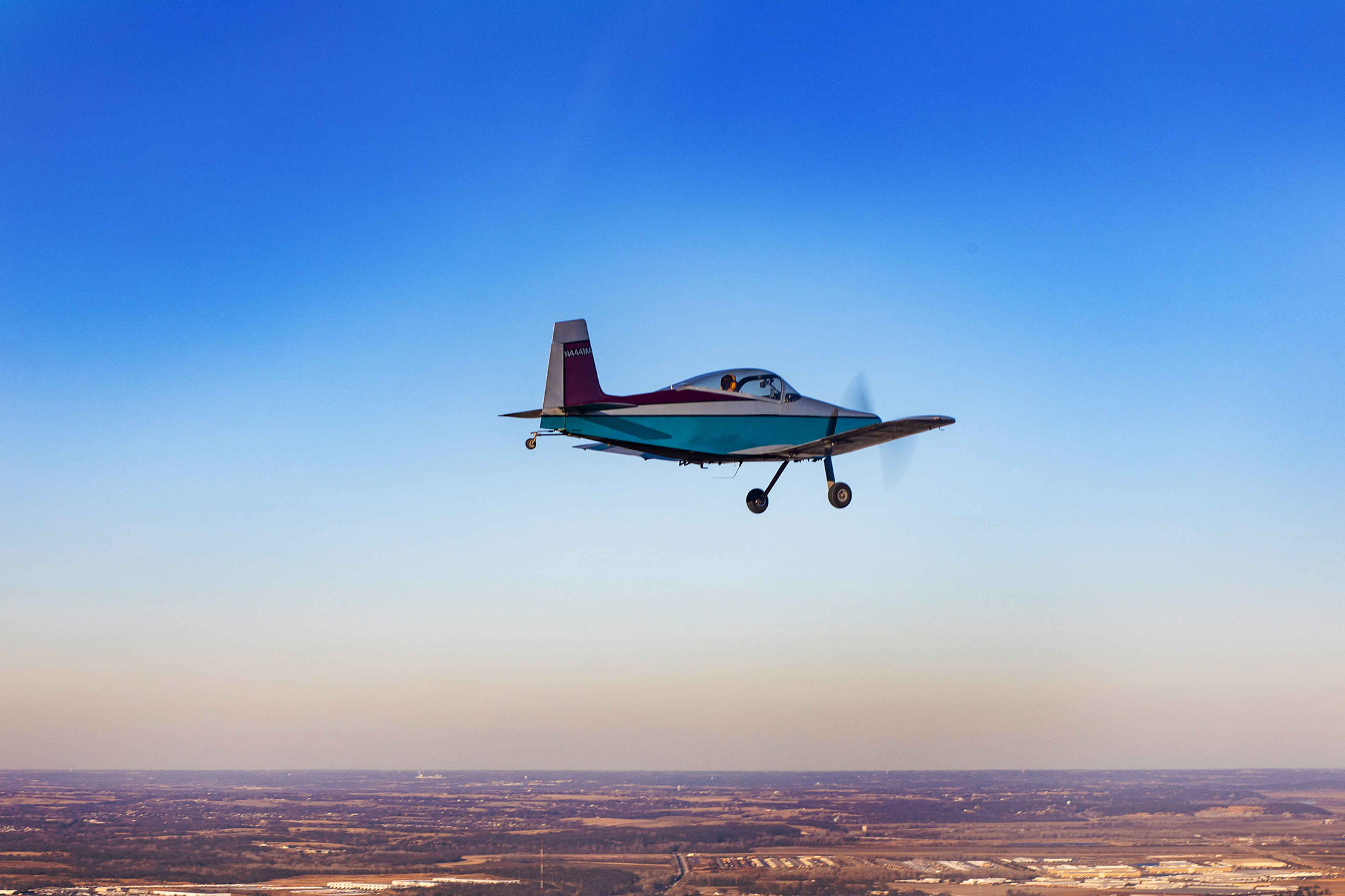Assistant professor Mujahid Abdulrahim’s passion for flying once led him to devise a way to commute to work in his personal plane. That passion also drives his research on helping pilots and passengers get home safely.
Modeling the movements of aircraft is the backbone of his research at the UMKC School of Computing and Engineering. Abdulrahim’s specialty is in autonomous aircraft development, but he stresses that autonomy isn’t just drones – it is everywhere in aviation. He wants to take auto-pilot functionality to a new level, not to take flying away from pilots, but to make their safety net stronger.
“I don’t want to replace pilots with computers,” Abdulrahim says. “I love the idea of preserving everything that makes airplanes fun to fly, but I also love the idea of coming home to my children after every time I take to the air.“
A self-described “air safety geek,” Abdulrahim is working on a computer algorithm that would interpret the equations of motion for each individual aircraft with predetermined models on how it should be performing. At any given time, moving the elevator stick of an airplane results in a specific response, and this technology would try to determine whether the flight matched the expected motion for that specific aircraft.
He’s also interested in the human element of these models. That’s why he’s looking to study how pilots learn and how they react to certain aviation situations. He’s especially interested in studying how pilots react when they’re at the edges of the flight envelope – the term “pushing the envelope” comes from testing the operating limits of an aircraft.
Abdulrahim’s goal is to incorporate pilot behavior into these models, to help indicate when the pilot could use assistance. He compares this supervisory system to lane-change warnings in modern automobiles: to detect an irregular driving pattern and let the driver know.
One area that will play a big part in this supervisory system is something called “task saturation.” According to Abdulrahim, it’s a concept that’s not limited to pilots.
“If you’re taking notes and someone asks you to solve a math question while also jumping on one foot and reciting the alphabet – you’ll eventually hit your task saturation point,” he says. “From there you’ll stop receiving inputs and only focus on one thing at a time, and you probably aren’t going to do that one thing very well.”

In aviation, this can happen to any size of aircraft, but is more common when pilots of small airplanes fly into bad weather. For example, a pilot can be talking to air traffic control while scanning for other aircraft, with limited visibility and high winds affecting air speed – suddenly that pilot has hit saturation.
With Abdulrahim’s supervisory system, a model can be built to monitor the flying skills a pilot shows as they fly – how well they hold airspeed, how well they hold altitude. If those skills suddenly take a turn for the worse, the system can intervene to improve safety.
Abdulrahim sees far-reaching potential for his modeling technology. He’s looking at replacing or enhancing aircrafts’ airspeed sensor – the only aircraft sensor exposed to the elements and thus more susceptible to being corrupted mid-flight. There are also ridesharing companies looking at autonomous aviation as the future of people transport. Abdulrahim is looking at how his models could help make that a reality.
His passion for flying will continue to drive his research into safer skies so everyone in flight – pilot and passenger – can keep coming home to their families.

